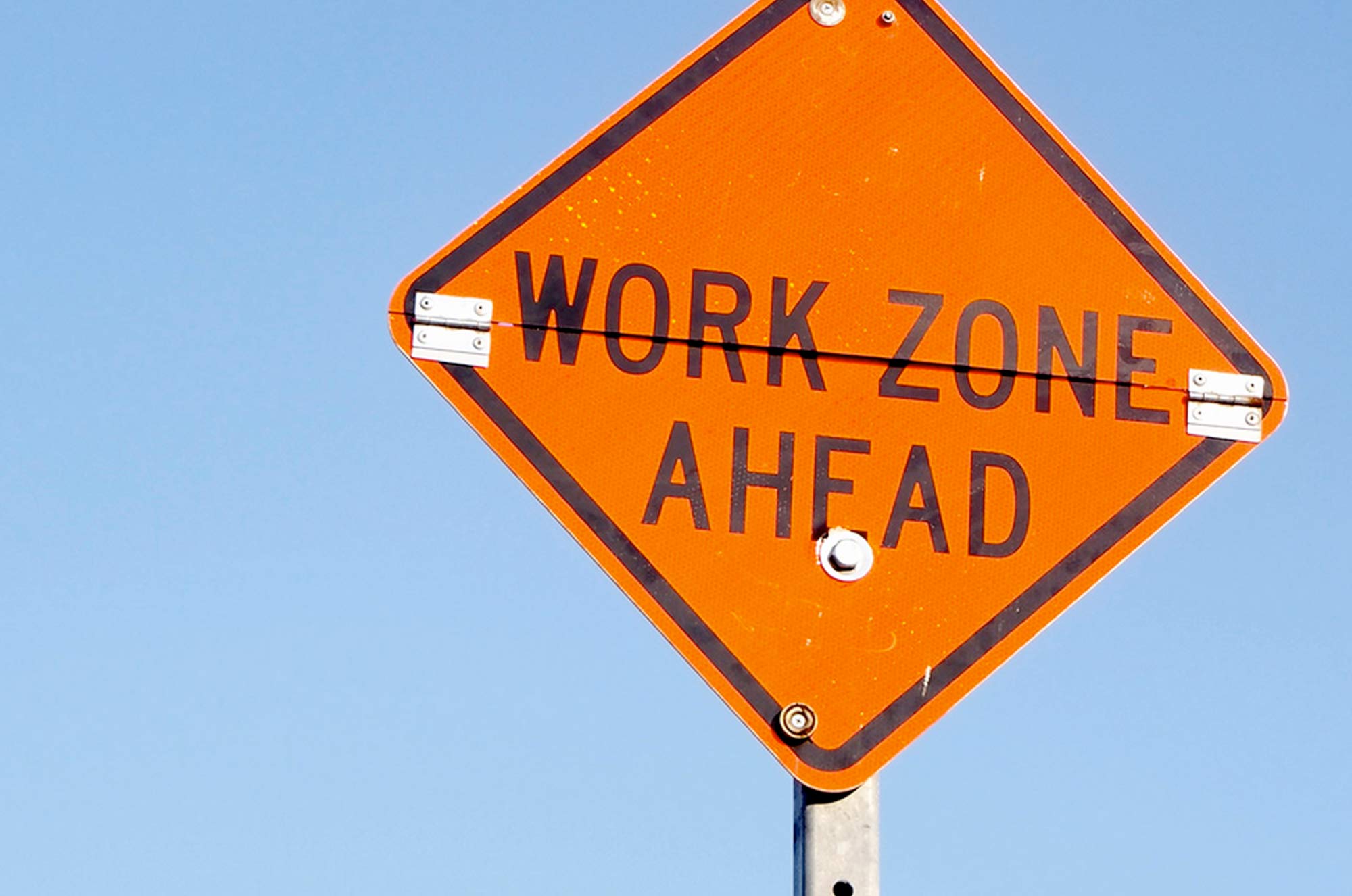KEEP WORK ZONES FROM BECOMING WRECK ZONES
You've heard it a million times -- the state flower of Texas (or any other US state for that matter) is an orange traffic cone. But the statistics from the National Highway Traffic Safety Administration make that statement less humorous, reminding us that each year more than 40,000 people are injured as a result of motor vehicle crashes in work zones. Statistics tell us that 85 percent of people killed in work zones are vehicle drivers or occupants, approximately one half of all fatal work zone crashes occurred during daylight hours, more than twice as many occurred on weekdays, and the seasons of the year when work zone fatalities are most likely to occur are summer and fall.
So, how can we keep "Work Zones" from becoming "Wreck Zones"? Well, to start with, by heeding the warnings. Work zones are posted well in advance with signs like "Road Construction 3 miles ahead." As you approach an area of converging traffic, "Transitional Warning" signs alert drivers to merging lanes or lane closures. These are followed by an area where equipment, materials and vehicles are maintained, called the "Buffer Zone." These elevating warning stages allow the driver to position the vehicle properly and prepare before entering the work zone.
As you will no doubt agree, highway work zones are an obstacle course - uneven driving surfaces; curves and corners; contradictory lane markings; orange barrels, cones and concrete barricades are everywhere; heavy equipment and pedestrian workmen, not to mention all the signs we encounter. Unfortunately, many motorists have little respect for the dangers surrounding highway work zones and do not take the warning to SLOW DOWN seriously when approaching and driving through these very dangerous sections of highway. Some may even exercise less caution than any other time. Not only do they not reduce speed to obey the posted speed limits, but some accelerate in an unsafe attempt to get through the area as quickly as possible. Stay calm when driving through a work zone; it will make the wait seem shorter and be less frustrating. Remember, it only takes 52 seconds longer to travel through a 2-mile long work zone at 45 mph than at 65 and those extra seconds may keep you from becoming a work zone statistic.
Another challenge that drivers face in work zones is that they may become confused by the changing traffic patterns with unclear or obsolete lane markings. This is especially common at night when all that can be seen is a maze of construction lane marking lights, reflectors and barricades against a dark background; or worse still, headlights from the oncoming traffic glaring over the top of the barricades, blinding drivers while they attempt to safely maneuver through. Remember, it is not just your driving that you need to be concerned about, but that of other drivers who might make a mistake that could cause a collision. Keep an extra-large "safety cushion" all around your vehicle.
Take your time, stay alert, and drive slowly and cautiously through highway work zones, and you'll keep "Work Zones" from becoming "Wreck Zones."



